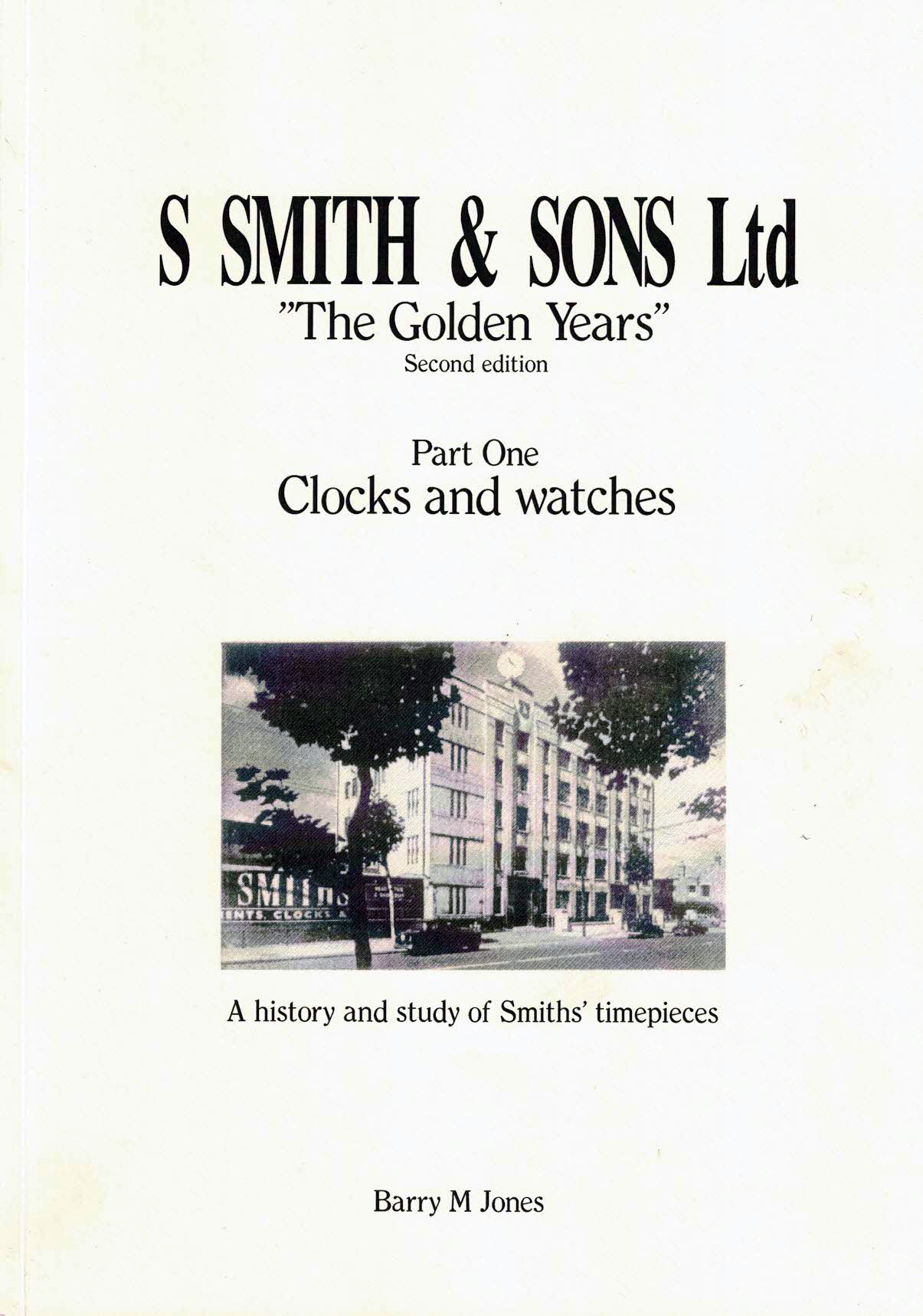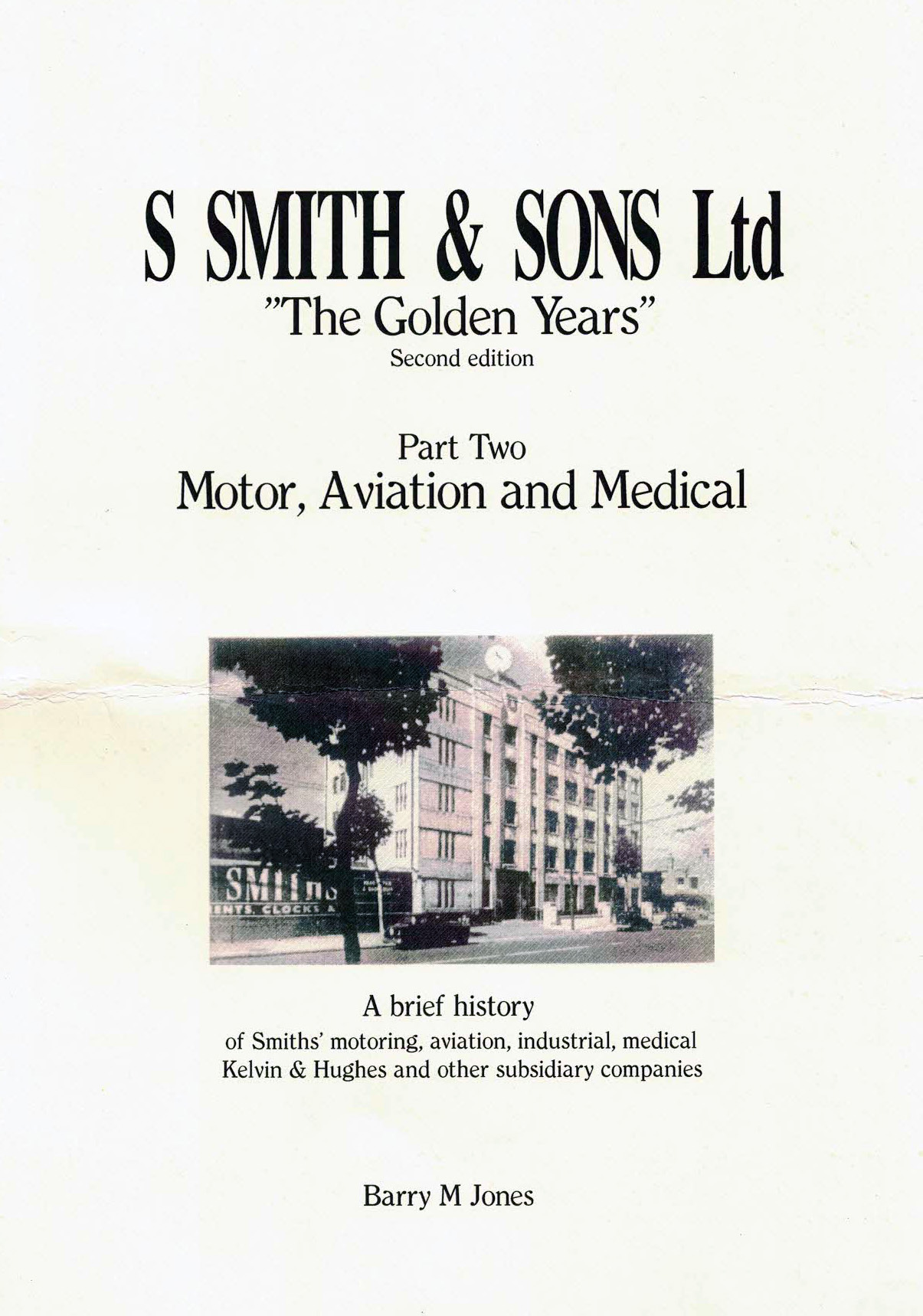A brief history of Smiths Industries, Kelvin & Hughes and their other subsidiaries
Samuel Smith (senior) began his business in 1851 in Newington Causeway, South London as a jeweller, diamond merchant, watch and clock retailer. With his son, also Samuel, now joining him they opened further shops near Charing Cross. Their time-pieces and Kew-rated chronometers were made for them using high-grade English (Nicole, Nielsen & Co) or Swiss movements.
With the advent of the motor-car, Smiths produced their first speedometer in 1904, made in association with Robert North of Nicole, Nielsen and soon expanded into marketing motor accessories and the fledgling aviation instruments, opening a new factory in Great Portland Street as S Smith & Sons (Motor Accessories) Ltd, followed by a new works at Cricklewood to meet growing demand for the war effort.
The 1920s saw major changes in Smith’s fortunes with several exclusive marketing agreements such as KLG spark plugs and Henry Hughes & Son Ltd (aircraft navigation instruments) leading to their take-over. In motoring, they gained Jaeger’s British chronometric speedometer interests and soon branched out into motor-car clocks, lighting systems, radiator thermostats and the in-built ‘Jackall’ hydraulic car-jack systems. In aviation, their new Desynn electrically controlled instruments and Hughes’ navigation interests led to the first British auto-pilot, much used by Imperial Airways and RAF Bomber Command.
Their jewellery and watch retail side had remained firmly in the family’s private hands until 1929, but no sooner had it been sold, than did the company expand into synchronous electric mantel and motor-car clocks, but it was not until the late-1930s, with war looming and the government eager to establish British manufacture of soon to be unobtainable escapements, primarily for aircraft instruments, that Smiths established their new Cheltenham plant and British Precision Springs Ltd. From here they produced their very own pocket- and stop-watches for the war effort. After the war, Cheltenham concentrated on aviation and avionics, but while still producing Smiths’ own high-grade wrist-watches intended for the war-time RAF, a new joint Smiths-Ingersoll plant was established with government assistance to rebuild a British horological industry. Their new Ystradgynlais works produced a range of budget, low-jewel, Ingersoll and Smiths ‘Empire’ watches and clocks.
Regarded the equal of high-grade Swiss watches, Smiths’ ‘Astral’ time-piece business increasingly became of lesser importance to avionics (auto-pilots, auto-landing, flying and fuel control systems) and after a final military contract in 1970, high grade watch production came to end. Budget clocks and watches however continued until 1978, but increasingly using imported movements and cases.
S Smith & Son Ltd had become Smiths Industries in 1966 to better reflect their diverse interests: Aviation, Motoring, Marine (primarily Kelvin & Hughes’ marine radar and echo-sounders) and Industrial (instruments, production controls, time-controls, ultrasonics). But even their mainstay motor accessories business (jacks, car heaters, instruments and ‘Radiomobile’ car-radios) struggled to survive the rapid decline of the British motor industry in the 1970s causing Smiths to withdraw from the motor industry in 1984 by merging those activities with Lucas, allowing Smiths to concentrate on their avionics, defence and medical (primarily Portex) interests. By now America had become Smiths’ primary profit-centre and base for expansion; they took over Lear-Siegler in 1987 and secured further aviation instrument contracts with Boeing.
Specialist companies from all industries were bought at a mind-boggling pace and then in 2000, Smiths Industries and Tube Investments (a major British metal tubes to Dowty hydraulics group) merged to form the global Smiths Group, now primarily avionics/defence, medical and industrial seals. They systematically sold off their non-core automotive, industrial air-movement and hydraulics businesses and finally, in 2007, their aviation and marine interests to become today’s global medical, detection and connectors group.
Quite obviously there is a lot more to Smiths than that brief introduction! This affordable work does more than just scratch the surface of this fascinating enterprise with its fully illustrated, 210+ pages, covering the history and development of their many operations, subsidiaries and production sites – but there is still so much more to record for posterity. The author worked for Smiths in the 1970s; his research has involved searching interviews with former staff, some of whom were there in the 1930s, as well as archival and contemporary records.
“S Smith & Sons Ltd – The Golden Years”
New 2nd edition is now through popular request in 2 parts;
Part One timepieces 150pp
Part Two motoring, aviation, industrial, medical and Kelvin & Hughes 180pp
200+ black and white illustrations A4 soft-back (c) 2013, 2nd edition 2017
“Amazed at the detail you have about Smiths – 95% new to me” HH (long serving retiree)
“Great book, as a watch collector it answers so many questions, many thanks!”… TJ
“… the attention to detail is particularly remarkable”. CJ NM


